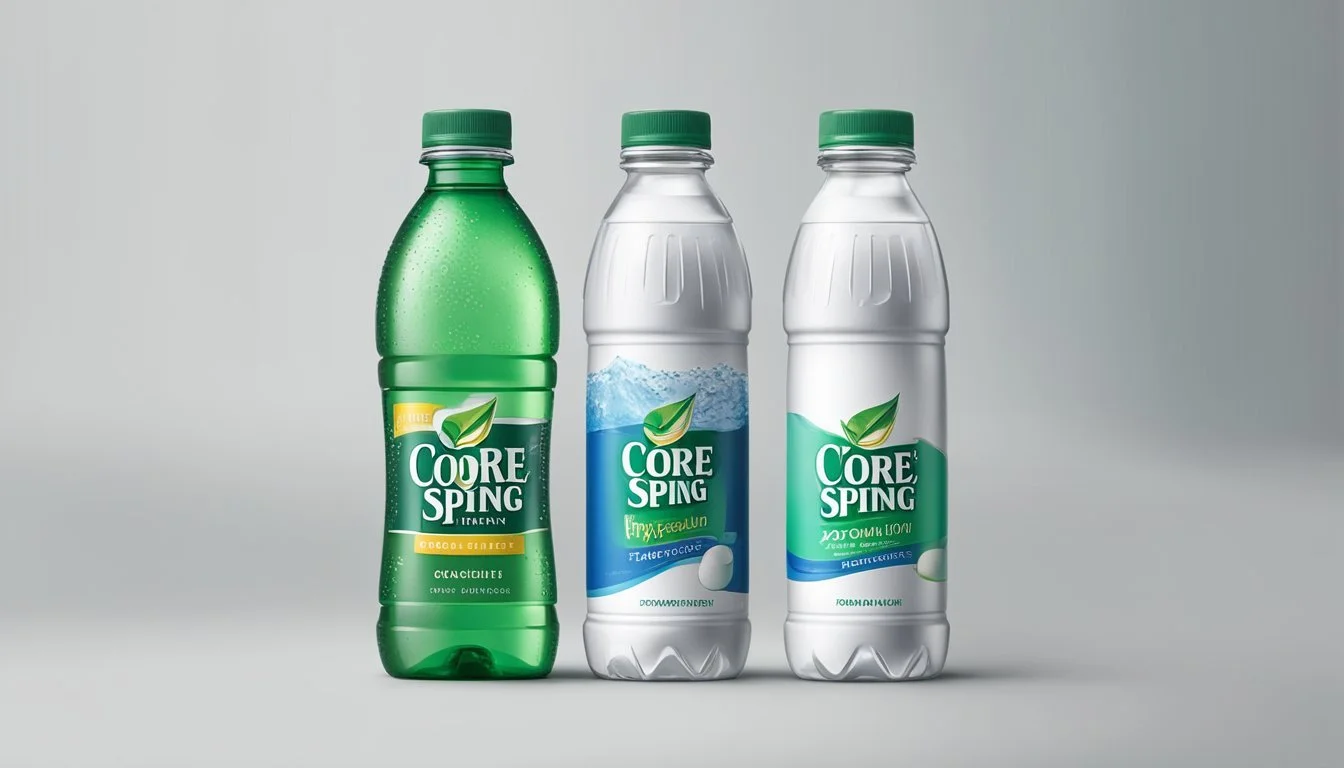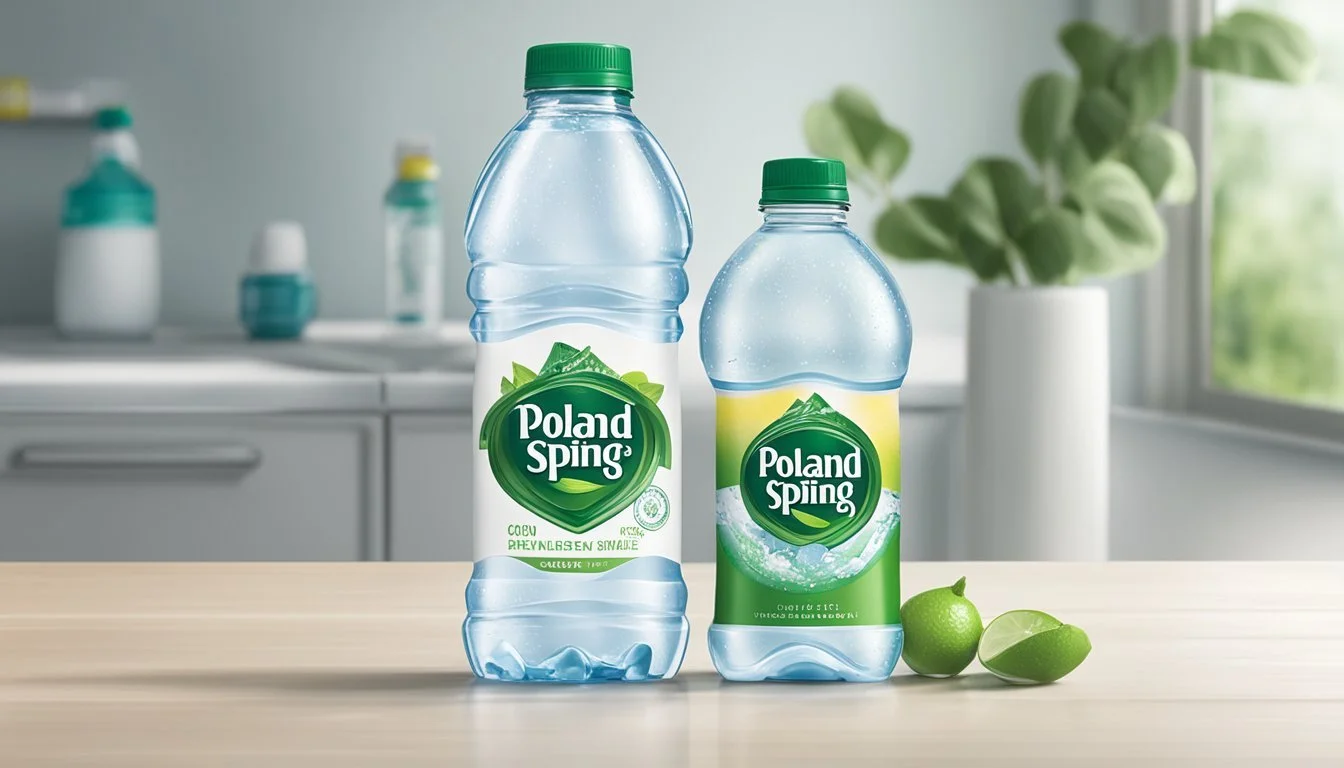Core Hydration vs. Poland Spring
An Unbiased Comparison of Bottled Water Brands
In the world of bottled water, two popular brands often come up for comparison: Core Hydration and Poland Spring. Both brands have carved out their distinct identities in the market, with Core Hydration presenting itself as a premium water with perfect pH and electrolytes for taste, while Poland Spring is known for its origin in the natural springs of Maine. Consumers frequently grapple with the choice between these two brands, each promising a unique combination of purity, taste, and health benefits.
Assessing the two brands involves examining various factors including the source of the water, the purification process, and the presence of minerals. Core Hydration boasts its ultra-purified water, enhanced with minerals and electrolytes without the addition of sodium or chlorine. In contrast, Poland Spring emphasizes its natural spring water, filtered through 10,000-year-old glacial sands which imbue the water with a blend of naturally occurring minerals.
The decision on which bottled water is superior ultimately rests on individual preference. Some may prioritize the crisp, clean taste of balanced pH in their water, while others might value the natural purity associated with spring sources. The market offers a multitude of choices to cater to varied tastes and health considerations, with Core Hydration and Poland Spring standing out as top contenders in their category.
Overview of Core Hydration and Poland Spring
Core Hydration is a bottled water brand popular for its balanced pH and electrolytes, catering to the needs of those seeking hydration closer to the body's natural pH. Carefully sourced, the water undergoes a seven-stage purification process which includes ultraviolet light exposure, reverse osmosis, and ozonation, promising a clean and crisp taste. Its bottle is distinctively contoured for a better grip and is made from 100% recycled plastic in a nod to environmental concerns.
Poland Spring originates from Maine, boasting a history that dates back to 1845. The brand offers various types of bottled waters, including spring water and sparkling water. Poland Spring sources its water from multiple springs, ensuring a consistent and fresh taste in every bottle. With a pH typically around 7.2, it stands as a neutral beverage. The spring water is celebrated for its balanced mineral content, lending to its reputation for quality.
Core Attribute Core Hydration Poland Spring pH Level Balanced; close to 7 Approximately 7.2 Source Multi-step purified Natural springs in Maine Packaging 100% recycled plastic Varies; includes options like sport caps Special Features Electrolytes added for taste and hydration Long-standing reputation and history
Both brands have secured their place in the competitive bottled water market. They cater to different consumer preferences: Core Hydration aiming for a modern, health-conscious demographic while Poland Spring appeals to those who prefer the taste and reliability of natural spring water with a storied past.
Composition and Source of Water
The consideration of the composition and source of bottled water is crucial to understanding its quality and health benefits. Factors including mineral content, source origins, and filtration processes play significant roles in defining the superiority of one brand over another.
Mineral Content and pH Levels
Core Hydration boasts a balanced pH, typically in the range of 7.4, and is infused with a blend of electrolytes and minerals such as calcium, magnesium, and potassium for taste and hydration. Poland Spring, on the other hand, has a composition that includes naturally occurring minerals from the spring, contributing to its taste and pH balance, which may vary according to the specific source spring.
Origin of Bottled Water Sources
Core Hydration's water is sourced in the United States and goes through a multi-stage purification process. Poland Spring originates from multiple springs in Maine, including a historic source in Poland Spring, and is categorized as natural spring water.
Filtration and Purification Processes
Core uses a process that includes reverse osmosis and ultraviolet light to remove contaminants and ensure purity. Poland Spring prides itself on natural filtration through limestone and other rock which provides minerality before it undergoes additional purification for safety standards.
Health and Safety Standards
Both brands adhere to stringent FDA regulations, with Poland Spring also meeting the IBWA (International Bottled Water Association) standards. For Core Hydration, the emphasis is on an ultrapure water offering through their filtration, promised to be free of fluoride, chlorine, lead, and heavy metals.
Environmental Impact and Sustainability Considerations
Sustainability efforts for both brands include commitments to BPA-free plastic bottles. Core's bottles are made from 100% recyclable plastic. Poland Spring, by being part of Nestlé, follows Nestlé's wider sustainability plan, yet public criticism over bottling natural resources persist.
Branding and Market Presence
Poland Spring is one of Nestlé's regional brands with a strong market presence in the northeastern United States. Core Hydration, a newer entry, sets itself apart by focusing on pH balanced water and a unique bottle design.
Taste Profile Assessment
Taste comparisons are subjective; however, Poland Spring's long history suggests a consistently favored profile. Core's water, with added minerals for taste, aims to offer a fresh and pure flavor that can also influence taste preferences.
The Importance of Hydration
Both brands promote hydration by marketing the presence of electrolytes in their water, important for bodily functions. Core emphasizes hydration qualities through optimal pH balance, while Poland Spring relies on its natural mineral content.
Consumer Convenience and Accessibility
Core and Poland Spring are widely available across the United States in various sized packages, from individual bottles to bulk packs, making them convenient choices for everyday consumption.
Comparative Analysis of Packaging
Core's proprietary contoured bottle is easily recognizable and designed to enhance the drinking experience. Poland Spring’s packaging is traditional, but the brand has a diverse range of options from small bottles to larger multi-gallon formats.
Public Perception and Brand Reputation
Poland Spring has weathered controversies over the source of its water but remains a familiar brand with a generally positive reputation. Core has carved out a niche with health-conscious consumers who are attentive to pH and electrolyte content.
Regulatory Compliance and Certifications
Both brands comply with federal and state regulations for bottled water. Core Hydration notes its compliance with all National Sanitation Foundation and IBWA guidelines, while Poland Spring highlights both FDA and IBWA compliance.
Innovation and Technology in Water Production
Core Hydration utilizes a proprietary Hydro-7™ filtration technology aimed at achieving the highest levels of purity and electrolyte balance. Poland Spring relies on a mix of traditional and modern techniques to maintain its water's natural qualities while ensuring safety.
Analytical Comparison: Core Hydration vs. Poland Spring
This section carefully considers various aspects of Core Hydration and Poland Spring bottled waters, from quality and taste to eco-friendliness and availability, providing an informed comparison between the two.
Differences in Water Quality
Core Hydration prides itself on offering ultra-purified water that is infused with electrolytes and has a perfect pH of around 7.4, aligning with the human body’s natural pH. In contrast, Poland Spring is a natural spring water, boasting a pH of 7.2, and is valued for its crisp taste and balanced mineral content including calcium, magnesium, and potassium.
Price Point and Value for Money
The cost of bottled water is an important consideration for many consumers. Poland Spring generally represents a cost-effective option, often available in bulk. Core Hydration, being an electrolyte-infused water that promises an optimized pH for hydration, typically commands a higher price point.
Customer Preference and Drinking Experience
Customer preferences vary between those who favor the enhanced taste and hydration benefits of Core Hydration's electrolytes to those who prefer the natural source and mineral content of Poland Spring. Water taste can be subjective, but the presence of electrolytes undoubtedly alters Core's profiles compared to Poland Spring's consistent spring water taste.
Availability and Market Coverage
Poland Spring has a wide distribution network, making it highly accessible throughout the northeastern United States. On the other hand, Core Hydration has been expanding its presence and while it may not be as widely available as Poland Spring, it is increasingly spotlighted in convenience stores and health food outlets.
Environmental Practices and Eco-Friendliness
Sustainability is essential for both brands; Poland Spring emphasizes its use of recycled materials and has committed to better environmental practices, including reductions in plastic use. Core Hydration bottles are 100% recyclable and BPA-free, appealing to eco-conscious consumers.
Comparison of Nutritional Aspects
Both brands offer more than just hydration. Poland Spring stands out for its natural minerals without additional processing. Core Hydration, however, adds electrolytes and minerals to match the body's natural pH, including calcium, magnesium, and potassium, for those seeking electrolyte-enhanced water for sports or health reasons.
Final Thoughts: Decision-Making Factors for Consumers
When purchasing bottled water, consumers often weigh several factors. Convenience is paramount for many; single-serve bottles from brands like Core Hydration or Poland Spring offer quick hydration solutions. On the other hand, cost implications can influence decisions, with prices differing across brands like Nestlé Pure Life or Mountain Valley Spring Water.
Taste is subjective but crucial. Some prefer the crisp taste from natural springs — which Poland Spring markets itself as originating from — while others might favor the unique electrolyte blend of Core Hydration for a smoother taste. Quality considerations often involve the source, be it artesian well, municipal water, or groundwater.
Factor Core Hydration Poland Spring Source Electrolite-infused; various sources Marketed as originating from natural springs in Maine Filtration Claims advanced water filtration Claims filtration and quality checks Packaging BPA-free bottles Recyclable bottles Taste Balanced pH, enhanced with electrolytes Natural spring taste Environmental Efforts to reduce plastic use Supports recycling and sustainability initiatives
In regards to hydration, both brands aim to provide fluids necessary to maintain bodily function, but Core Hydration prides itself on its pH-balance, catering to those attentive to body acidity levels.
Consumers interested in the environmental impact might compare the ecological initiatives of each company. Whether it's Core's promises to reduce plastic use or Poland Spring's affiliation with Nestlé and their recycling programs, these aspects could sway eco-conscious buyers.
Finally, brand reputation can play a role. With Nestlé overseeing numerous water brands like Ice Mountain and Arrowhead Mountain Spring Water, its broader practices may affect perceptions of Poland Spring. While Core Hydration, though less widespread, touts its purity and thoughtful pH balance to garner consumer trust.
Conclusion
When comparing Core Hydration and Poland Spring bottled waters, consumers may consider several factors such as source, taste, and added enhancements.
Core Hydration is known for its ultra-purified water, which is enhanced with electrolytes and minerals for taste. The acidity is carefully balanced to match the human body’s natural pH level, which is advertised to provide better hydration.
Poland Spring, on the other hand, is sourced from natural springs in Maine and prides itself on its clean and refreshing taste. It has established a reputation for consistent quality over the years.
In terms of health benefits, both brands offer hydration essential for bodily function. However, Core Hydration's added electrolytes may appeal to those seeking a post-exercise replenishment or who prefer the alkaline water profile.
One's preference for either Core Hydration or Poland Spring may also come down to environmental considerations. Consumers often look at packaging practices and sustainability efforts of the companies behind these brands.
Factor Core Hydration Poland Spring Source Ultra-purified Natural spring Taste Enhancements Electrolytes and minerals added None pH Level Balanced to match body’s pH Natural pH of source Sustainability Efforts Company’s initiatives considered Company’s initiatives considered
Individuals should choose based on their personal preferences, considering taste, the importance of added electrolytes, and each brand's environmental practices.






